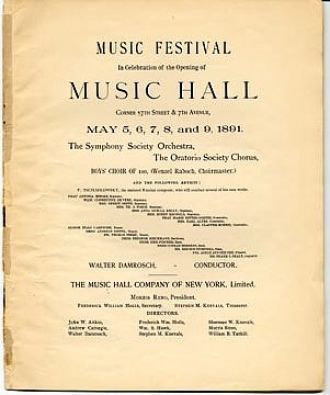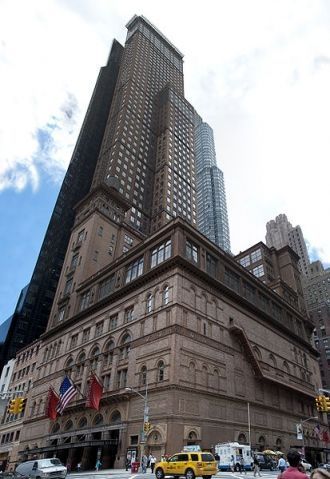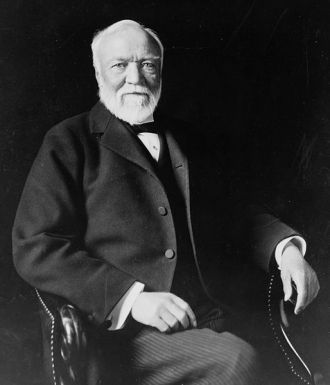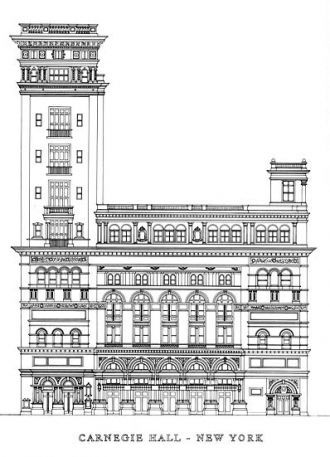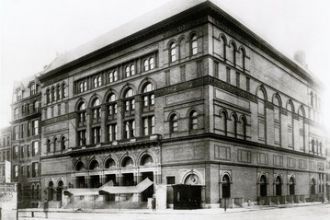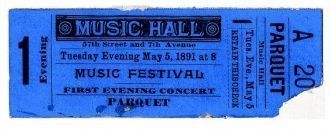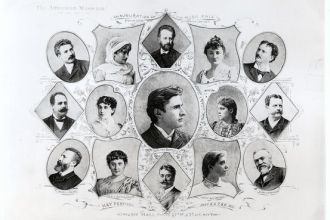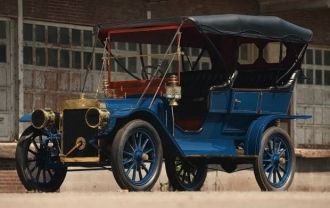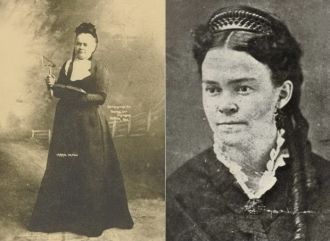USA, New York City
In the spring of 1891, at the time of his first and only trip to the U.S., Peter Ilyich Tchaikovsky was perhaps the most famous musician in the world. In New York, he recorded his delight at the warm reception he received.
"Mr. Romeike sends me daily piles of newspaper clippings about myself," Tchaikovsky wrote in his diary. "All of them without exception are laudatory in the highest degree. Is it possible that I really conduct so well? Or do the Americans exaggerate?!!!"
The 50-year-old composer, who would only live another two years, had been invited to lead the New York Symphony at the opening series for a new venue financed by industrialist Andrew Carnegie, then simply called Music Hall. Carnegie, it seemed, was a fan.
"Throughout the whole evening," Tchaikovsky wrote of his host, "he displayed his regard for me in an unusual manner. He grasped my hands, declaring that I am the uncrowned but true king of music; embraced me (without kissing—here men never kiss), expressed my greatness by standing on tiptoe and raising his hands up high."
One hundred and twenty years later, what is now Carnegie Hall will open its new season with a monthlong celebration of Tchaikovsky and other Russian composers, including performances of all six of Tchaikovsky's symphonies. The opening-night gala on Oct. 5 features Valery Gergiev conducting the Mariinsky Orchestra in Shostakovich's "Festive Overture," Tchaikovsky's "Variations on a Rococo Theme" and Rimsky-Korsakov's "Scheherazade," featuring cellist Yo-Yo Ma.
The man of honor arrived in New York in April 1891, on an offer of $2,500 for the inaugural festivities at the new venue (the equivalent of about $70,000 today), as well as engagements in Baltimore and Philadelphia. "It was a huge deal," said Clive Gillinson, Carnegie Hall's executive director. "One has to remember at that time America was not the center of the music universe at all. And Carnegie Hall was built in the wilderness—there was nothing there."
Indeed, when construction began in 1890, Midtown was on 14th Street. The Hall was first conceived as a home for the Oratorio Society of New York, a choral music group that counted among its board members Mr. Carnegie's wife, Louise, and William Burnet Tuthill, an amateur cellist and a founder of the Architectural League of New York. Carnegie chose Tuthill to design his first concert hall.
"Carnegie picks a guy who was a musician who also happens to be an architect, as opposed to getting a great architect and having to deal with music," said Carnegie Hall archivist Gino Francesconi. "He was taking an amazing chance on an unknown architect."
In the years before Tchaikovsky came to Carnegie, in addition to the considerable income he was making as a conductor and composer, he'd been receiving $3,000 a year from a Baroness von Meck, a patron with whom he corresponded only by letter, Mr. Francesconi said. She had cut him off not long before he came to America.
"Like [for] so many other artists, Russian and otherwise, America was a wonderful opportunity to make a buck," said Tchaikovsky biographer Roland John Wiley. "[But] one of the big factors that's not talked about so much was that Walter Damrosch [musical director of the Oratorio Society and the New York Symphony Society] had been a devotee of Tchaikovsky. I think the real compliment that he received was that he discovered that they were playing his pieces here more than they were playing them anywhere else. This was Walter Damrosch working."
The composer also enjoyed the city. He wrote in his diary about strolling on Broadway, dining at Delmonico's, quietly celebrating his 51st birthday. And he traveled to see "what every tourist in America could, if they could," said Mr. Francesconi—Niagara Falls.
The Music Hall opened with a five-day festival of six concerts. Tickets were sold first by subscription ranging from $5 for balcony seats to $10 for parquet. Single tickets went on sale after people wrote in to newspapers complaining that they couldn't afford subscriptions.
On opening night, May 5, 1891, audience members arrived in trolley cars or horse-drawn buggies, though neither was particularly reliable or available. Tchaikovsky took an overcrowded trolley, but he generally preferred to walk from his lodgings at the Hotel Normandie on 38th and Broadway. As he wrote in his diary, "It's necessary to run about here constantly due to the lack of hackneys."
The hall was packed. Some who couldn't score tickets tried to bribe the ushers as much as a dollar each to get in, Mr. Francesconi said. Before Tchaikovsky went on, there was a dedication of the hall, a couple of hymns by the Oratorio Society, Beethoven's "Leonore Overture No. 3" and finally, Tchaikovsky's own "Marche Solennelle." The conductor later wrote in his diary: "Intermission. Went downstairs. Excitement. My turn. Was welcomed very loudly. The March went off excellently. A big success."
He said Carnegie urged him to return the next year, and he kept in touch with Damrosch, who would later ask to host the New York premiere of Tchaikovsky's "Symphony No. 6." But Tchaikovsky died after completing the Sixth Symphony in 1893. Shortly thereafter, Mr. Francesconi said, Damrosch received a parcel with that score in the mail.
In the months after the opening, the excitement Tchaikovsky had generated died down, as did the sheer newness of Carnegie's hall. But that November, William Steinway brought Polish pianist Ignacy Jan Paderewski to New York. He'd seen him first in London, where impassioned audiences pounded the stage at his concerts. But rather than install him in his own Steinway Hall downtown, Steinway booked Paderewski in Carnegie's place. It was twice as big and he could sell twice as many tickets.
"This is where the mythology starts," Mr. Francesconi said. "Other managers had seen what Steinway did and thought, 'I'm going to put my artist up there, too.' If you were good enough they went the extra mile."
Source: http://www.wsj.com/articles/SB10001424052970204226204576601010452872084



 USA, New York City
USA, New York City
